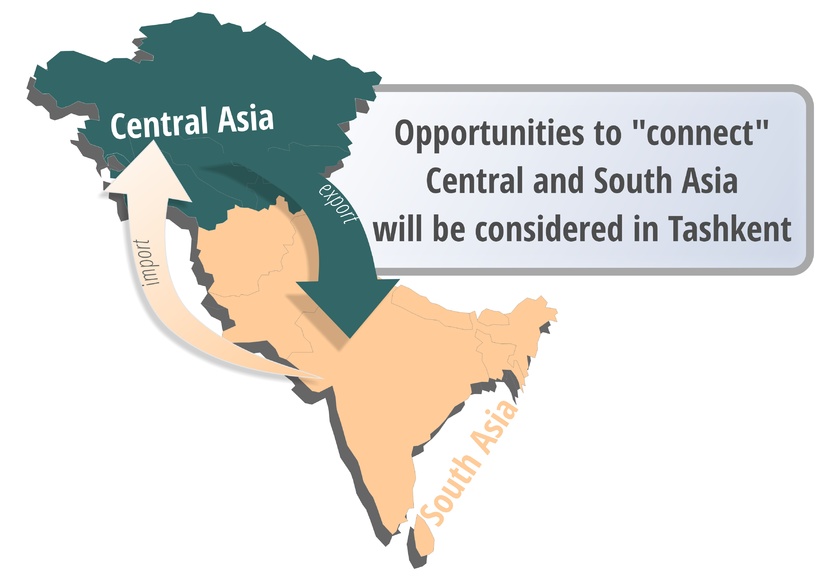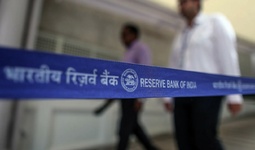The international conference “Central and South Asia: Regional Connectivity. Challenges and Opportunities”, which is scheduled to be held on July 15-16 in Tashkent will help to develop vision and directions of the regions.
The heads of states, governments and foreign affairs of Central and South Asian countries, representatives of other countries, including Russia, the United States and China, as well as international organizations are invited to participate in the conference, which will provide an opportunity to discuss at a high-level specific proposal for the practical implementation of the mutual cooperation between the countries such key areas as transport and logistics, energy, trade and investment and cultural - humanitarian
Regional priority of Uzbekistan
The new foreign policy of Uzbekistan with neighboring countries was designated by the President of Uzbekistan immediately after his election and the countries of Central Asia (CA) have taken priority in it. The head of state also began his first official foreign visits with the Central Asian countries and he subsequently initiated the creation of a format of regular consultative meetings of the region's leaders. and a format of regular consultative meetings of the leaders of the was created.
As a result of the Uzbekistan’s cooperation with the Central Asian countries over the past 4 years, trade turnover with them has more than doubled from $2.5 billion to $5.2 billion, including with Kazakhstan 1.8 times, Kyrgyzstan 5 times, Turkmenistan 2.7 times and Tajikistan 2.4 times and the share of CA countries in Uzbekistan's foreign trade increased from 10.2% to 12.4%.
Export indicators also increased almost 2 times, from $1.3 billion to $2.5 billion, and the share of Central Asian countries in total exports of Uzbekistan increased from 10.8% to 14.5%. In the first five months of 2021, the volume of exports to CA countries showed an increase of 20% compared to the same period last year, and the share of CA countries in total exports (excluding gold) increased to one-fifth.
With the growth of trade, investment cooperation is expanding, joint ventures for the production of home appliances, automobiles and textiles with the participation of Uzbek capital have been opened in the countries the region with the participation of uzbek capital. On the Uzbek-Kazakh border, construction of the International Center for Trade and Economic Cooperation "Central Asia" has begun, agreements have been signed on the establishment of the "Uzbek-Kyrgyz Investment Fund" and "Uzbek-Tajik Investment Company".
Prospects for cooperation between the regions
The Central Asia is a market with a population of 75.3 million and the total GDP is $300 billion. At the same time, GDP growth rates in the CA countries in recent years have been high - averaging 5-7%.
In 2020, the total foreign trade turnover of the CA countries amounted to $142.6 billion, of which $12.7 billion or 8.9% is the share of intraregional trade, which would be much higher if we exclude the exports of primary products, which the region mainly supplies to third countries.
The main trade routes of the CA countries are laid in the northern direction, in order to diversify foreign trade, a promising direction is the development of economic cooperation with the countries of South Asia.
The countries of South Asia are a market with the population of about 1.9 billion (25% of the world), with the total GDP of more than $3.3 trillion. (3.9% of Global GDP) and foreign trade turnover of more than $1.4 trillion.
At present, the trade turnover of the Central Asian countries with the South Asian countries has small volumes, in 2020 - $4.43 billion, which is only 3.2% of their total foreign trade turnover. At the same time, the foreign trade turnover of Kazakhstan is 2.3%, Uzbekistan - 3.8%, Turkmenistan - 3.4%, Tajikistan - 4.0% and Kyrgyzstan - 1.0%.
The calculations show that there is an unrealized potential for trade between the countries of Central and South Asia at $1.6 billion, of which from Central to South Asia - about $0.5 billion.
Despite the small volume of trade, CA countries are interested in implementing large investment projects with the participation of South Asian countries. For example, Kyrgyzstan and Tajikistan in the implementation of the international project "CASA-1000", which provides for the construction of transmission lines for the supply of electricity in the amount of 5 billion kW/h to Afghanistan and Pakistan; Turkmenistan in the construction of the Turkmenistan-Afghanistan-Pakistan-India (TAPI) gas pipeline with a capacity of 33 billion cubic meters of gas per year; Kazakhstan in the development of the international transport corridor "North-South", using the Iranian port "Chabahar" to increase trade with India and other countries of South Asia.
Uzbekistan is laying a transport route to the south
Expanding cooperation with the South Asian countries, above all, Afganistan opens up new promising markets and transport routes for Uzbekistan.
In 2020, exports to Afghanistan amounted to 774.6 million, India - 19.7 million and Pakistan - 98.3 million, imports of food and industrial products, as well as energy. Afghanistan accounts for the largest export volumes due to its geographical location, as well as its heavy dependence on imports of food, industrial goods and energy resources. In this regard, Uzbekistan plans to bring the annual volume of mutual trade with Afghanistan to $2 billion by 2023.
On the territory of Afghanistan, it is planned to implement the investment project "Construction of a 500-kW power transmission line" Surkhan - Puli-Khumri ", which will connect the power system of Afghanistan to the unified power system of Uzbekistan and Central Asia.
The implementation of the project for the construction of the Mazar-i-Sharif-Herat railway line is currently underway, which will become an extension of the Hairaton-Mazar-i-Sharif railway line and form a new trans-Afghan transport corridor.
It is envisaged to develop a project for the construction of the Mazar-i-Sharif-Kabul-Peshawar railway, which was already discussed at a meeting of a trilateral working group with the participation of government delegations of Uzbekistan, Pakistan and Afghanistan in February this year in Tashkent.
The construction of this railway will significantly reduce the time and cost of transporting goods between the countries of South Asia and Europe through Central Asia.
In conclusion, it should be noted that increasing the volume of trade between the Central Asian countries and the countries of South and Southeast Asia largely depends on the creation of reliable transport routes for the delivery of goods.
In this regard, the project for the construction of the Mazar-i-Sharif-Kabul-Peshawar railway plays important role for the countries of the regions, as it will allow them to significantly reduce transport costs for the delivery of goods to foreign markets.
It should be noted that the implementation of these joint economic projects provides for the active participation of Afghanistan, which plays the role of a kind of bridge between the two regions.
At the same time, recent events in Afghanistan introduce uncertainty into the prospects for the implementation of international economic projects on its territory.
In this regard, the upcoming international conference on the topic of cooperation between Central and South Asia, among others the President of Afghanistan Ashraf Ghani and the Prime Minister of Pakistan Imran Khan are invited, if representatives of the Taliban movement also participate in it, can play a significant role in determining further prospects for cooperation between the countries of the two regions.





















leave a comment